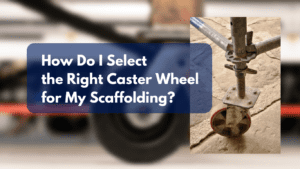Scaffolding Safety & Secure Structural Development
Scaffold assembly and dismantling are critical processes in construction and scaffolding industrial projects. Traditionally, these tasks have been labor-intensive and time-consuming, leading to delays and increased costs. However, with the advancements in scaffolding systems and techniques, it is now possible to streamline these processes and save both time and labor.
In this blog post, we will explore various strategies and tips to optimize scaffold assembly and dismantling for saving time and labor on construction sites.
1. Plan and Prepare Efficiently
Before starting any scaffolding project, thorough planning and preparation are crucial. By investing time in meticulous planning, you can significantly reduce the overall assembly and dismantling duration. Here are a few key aspects to consider:
- Site Assessment: Begin by assessing the site conditions, including terrain, access points, and potential obstacles. This evaluation will help you determine the most suitable scaffold design and configuration.
- Equipment and Material Management: Ensure that all the required scaffolding accessories, equipment and materials are readily available before initiating the assembly process. This includes scaffolding components, tools, safety gear, and any specialized equipment.
- Task Sequencing: Plan the assembly and dismantling sequence in advance. Identify the critical path and prioritize the tasks accordingly to minimize downtime and optimize labor efficiency.
2. Utilize Modular Scaffolding Systems
One of the most effective ways to save time and labor during scaffold assembly and dismantling is by utilizing modular scaffolding systems. These systems consist of pre-fabricated components that can be easily interconnected, offering flexibility and ease of installation. Innovative modular scaffolding solutions significantly enhance efficiency. Here’s how they can help:
- Quick Assembly: Modular systems, such as the Ringlock system, feature intuitive designs that allow for rapid assembly. The components are designed to fit together seamlessly, reducing the need for extensive manual labor and specialized skills.
- Easy Adjustability: Modular scaffolding systems offer adjustable height and width, allowing for easy adaptation to different scaffolding construction requirements. This flexibility eliminates the need for cutting or modifying components, saving time and effort.
- Safe and Sturdy: Modular systems undergo rigorous testing to ensure safety and stability. The sturdy design and reliable connections minimize the risk of accidents, providing a secure working environment for the labor force.
3.Employ Efficient Work Practices
Apart from utilizing advanced scaffolding systems, implementing efficient work practices can further optimize time and labor during scaffolding construction. Consider the following strategies:
- Team Coordination: Ensure effective communication and coordination between team members. Assign specific roles and responsibilities to each worker, streamlining the workflow and avoiding delays caused by confusion.
- Task Specialization: Encourage task specialization to enhance productivity. By assigning workers to specific tasks they excel in, you can capitalize on their expertise and achieve faster results.
- Training and Certification: Invest in comprehensive training programs for scaffold assembly and dismantling. Certified workers will be well-versed in the best practices, enabling them to work efficiently while adhering to safety regulations.
4.Implement Time-Saving Techniques
To further expedite scaffolding accessories assembly and dismantling, consider implementing the following time-saving techniques:
- Pre-Assembly: Pre-assemble scaffold components wherever possible, especially for repetitive tasks. This approach allows for quicker installation on-site and reduces labor hours.
- Use of Mechanical Aids: Whenever feasible, employ mechanical aids like hoists, pulleys, and material handling equipment. These tools can significantly reduce the physical effort required for lifting heavy components, minimizing labor fatigue and enhancing overall productivity.
- Parallel Processing: Look for opportunities to parallel process different stages of scaffold assembly and dismantling. For example, while one team is assembling scaffolding on one side of the structure, another team can simultaneously dismantle the scaffolding from a different area.
Save Time And Labor With AAIT Technocraft
Efficient scaffold assembly and dismantling are crucial for successful construction projects. By implementing the strategies outlined above and leveraging advanced modular scaffolding systems like those offered by AAIT Technocraft, you can save significant time and labor during these processes. Remember to prioritize planning, utilize innovative systems, employ efficient work practices, and implement time-saving techniques.
By doing so, you will not only enhance productivity but also improve safety on the job site. Embrace these advancements and transform your scaffold assembly and dismantling practices for the better with the leading scaffolding parts manufacturer in the USA AAIT Technocraft’s scaffolding equipment and accessories.












 Download
Download








